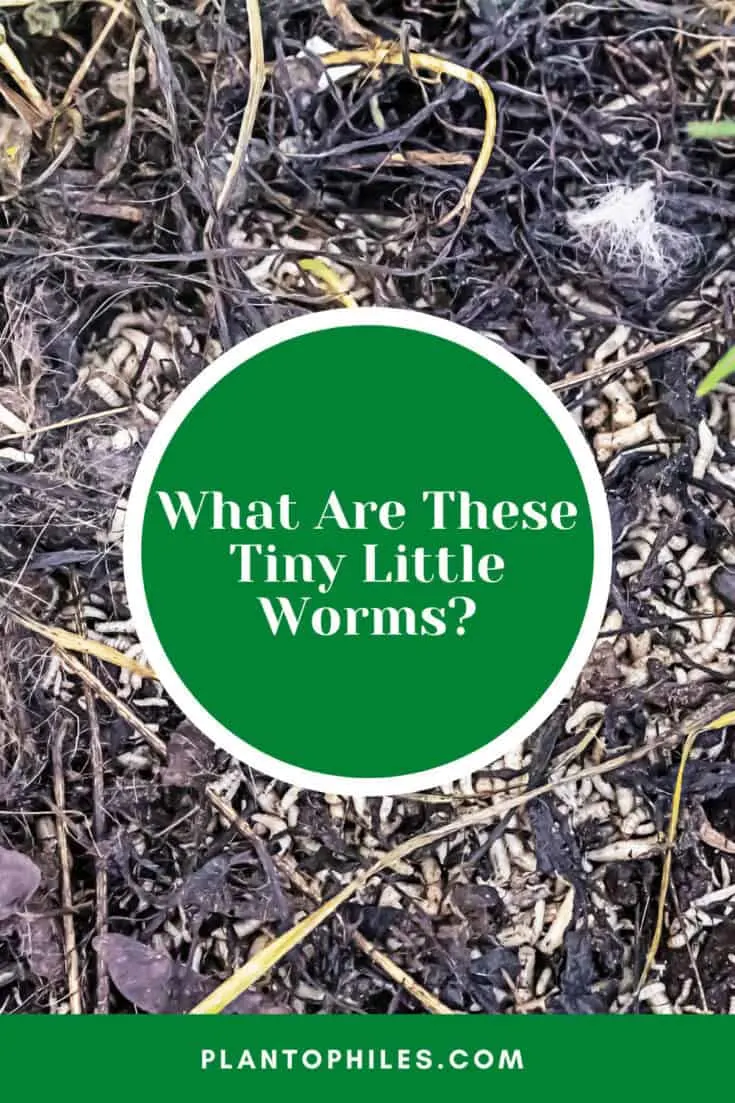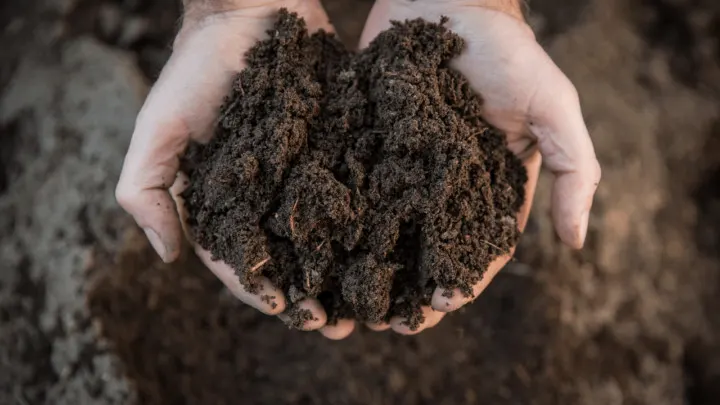Have you ever wondered about those tiny little worms that appear in your plant’s soil? In this guide, we’ll explore their identity and provide insights into what these creatures are, why they appear, and how to address them effectively.
Table of Contents
What Are These Tiny Little Worms?
Tiny little worms in the soil are usually white worms known as Entrachyadids. If you have recently changed your plant’s potting mix or it had to bear heavy rainfall, you may find these worms in your plant’s soil. These tiny creates can also be fungus gnats larvae, a common garden pest.
Tiny Little Worms in Soil
Several plant pests initially appear as white worms in soil compost. However, as they grow, their identification and appropriate treatment become easier.
The small white worms can be pot worms that are frequently mistaken for baby red wiggles. Alternatively, the little creatures can be the larvae of fungus gnat, a small black fly that crawls around the plant’s soil or flies over it.
These bugs and larvae are unsightly and adversely affect several plant parts.
The entire plant may be damaged as the bugs feed on its soil’s organic matter. However, the roots are usually damaged the most.
The worms’ persistent feeding eventually leads to root rot, an absolute nightmare for the houseplant owner.

What Are These Tiny Little Worms?
What Promotes the Appearance of Tiny Little Worms?
A long list of reasons leads to the growth and expansion of white worm colonies. They can infect the cleanest of plants and rapidly spread to others, adding to the gardener’s worries.
A few reasons include the following:
Heavy Showers
While light rain is good for plants and easily washes away, heavy showers often strip the soil of its nutrients and encourage the growth of numerous unwanted and malevolent soil pests and bugs.
The soils drenched in water often allow many organisms to flourish. At the same time, some synthesize essential micronutrients for the plants, and most feed on the plants instead.
One such bug is the white worm, which thrives in wet soils and reproduces rapidly, making it significantly difficult for the gardener to control and limit their spread.
Altered pH
An ideal soil pH is as crucial to the plant as a steady nutrient supply. An unfavorable pH can cause extensive damage.
It can limit new growth, damage existing leaves and blooms, and, as in this case, give rise to white worms and other pests.
An acidic to neutral pH (5 to 8) minimizes infectious agents’ growth, allowing the plant to grow and flourish. However, if materials such as bone meal, ground clamshells, or hardwood ashes are added, the pH becomes more alkaline.
The higher pH enables countless pests to breed and infest plants.
High Humidity
Many houseplant owners already know that most plants prefer high moisture to a dry environment. Such plants thrive in high humidity, producing vibrant and healthy blooms and leaves.
However, problems arise when the plant is persistently exposed to high moisture without frequent cleaning and dusting.
Excessive moisture is absorbed by the plant, either from the air or the soil, and the plant’s susceptibility to infections and pest infestation increases.
Such high humidity conditions favor tiny white worms, which lay numerous eggs within a day to increase their number significantly.
Decomposing Organic Matter
Uncountable pests and bugs enjoy feeding on decomposing organic matter, such as dying leaves and old fruits. If the decomposing or deteriorating matter is not promptly removed from a plant’s surroundings, it is highly probable that its soil will grow tiny white worms.
The decomposing organic substance serves to be an ideal breeding ground for the worm’s larvae. The white worms multiply within days and can be seen moving over the plant’s soil as well as through the deep burrows.
Rapid Spread
All plant pests and diseases, including white worms, quickly spread from one plant to another when they are nearby or grouped in one room.
A fresh and non-infectious plant can be completely normal one day and have numerous discolored spots and white worms moving through its soil the next day.
As if that is not enough, if immediate action is not taken, the white worms can lead to a full-house infestation.
How to Treat Plants Infested by White Worms
Fortunately, tiny white worms can be spotted relatively quickly due to their light color before they do considerable damage. A few simple care tips will help you locate and remove them quickly.
Wash It Out
After the rain has done its job, it is time that you get to yours. If your plant’s soil is completely soaked in water, either wash it out so that any extra minerals accumulated are washed out or simply replace it with an appropriate fresh soil mix.
If you opt for the former and plan to wash it out, place your plant under filtered sunlight to eliminate extra water.
The Right pH
The importance of right pH cannot be stressed enough. It is one of the basic factors that either make or break things for a plant.
Find out the ideal pH for your plant either from a professional gardener, a local plant store or from any other genuine plant source. I suggest you establish and maintain the recommended pH and enjoy it as your plant matures into a true beauty.
To check the appropriate pH level, you can use a pH meter.
The Perfect Humidity
If your plant’s soil or its environment is full of unnecessary moisture at all times, I recommend you place it in an airy environment under the bright, dappled sunlight for some time.
The sun rays will help evaporate the extra moisture the plant has absorbed and help it retain only the needed amount.
Good Hygiene
As you may have guessed, maintaining good hygiene is the key to having happy and healthy plants. Mist and dust your plants at least once a week, and check the leaves, their undersides, and the soil often for any bugs and pests.
Moreover, if any plant dies, remove the damaged plant from the other healthy plants.
You can use some plants’ decomposition products to increase the soil fertility for other plants. Therefore, I advise you to check if the decompose is useful before discarding it.
Additionally, place the plants at a decent distance from one another to prevent the spread of white worms from one plant to another.
Frequently Asked Questions about Tiny Little Worms in Soil
Are white worms harmful to plants?
White worms do not cause extensive damage. However, if they are allowed to breed for long periods, they may cause root-rot and leaf discoloration.
How do I quickly get rid of white worms?
Apply insecticide on your infected plants, or simply handpick any white worms that you see crawling around in your soil compost.
Will I have to replace my plant’s soil if white worms infest it?
If a minimal number of white worms is present, you may handpick them and continue using the same soil. However, if their number has increased significantly, it is best to replace the soil.

Daniel has been a plant enthusiast for over 20 years. He owns hundreds of houseplants and prepares for the chili growing seasons yearly with great anticipation. His favorite plants are plant species in the Araceae family, such as Monstera, Philodendron, and Anthurium. He also loves gardening and is growing hot peppers, tomatoes, and many more vegetables.


